Abstract
1. The previous findings that N-methylhistamine and N-dimethylhistamine are more potent stimulators of gastric secretion than histamine have been confirmed in dogs with Heidenhain pouches or gastric fistulas.
2. In cats with gastric fistulas, doses of N-methylhistamine of 0·25 or 0·5 μmole/hr produced 1·4-1·6 times as much HCl as equimolar doses of histamine.
3. The maximal HCl outputs of dogs with Heidenhain pouches to histamine, N-methylhistamine, and N-dimethylhistamine were not significantly different, though lesser doses of the N-methyl derivatives were required to produce the maxima. At the one-half maximal level, N-dimethylhistamine showed a twofold greater potency than histamine.
4. When given slowly or quickly via arteries supplying blood to the stomach of dogs or cats with gastric fistulas or via the artery to a Heidenhain pouch in a dog, 0·1-1·0 μmole N-methylhistamine or N-dimethylhistamine produced 4·1-13·9 times as much HCl as equimolar doses of histamine.
5. Injection of histamine or N-methylhistamine via the portal vein in two dogs with gastric pouches stimulated less secretion of HCl than injection of the same doses via a systemic vein.
6. The results allow the conclusion that N-methylhistamine and N-dimethylhistamine are more potent stimulators of acid gastric secretion than histamine in dogs and cats, particularly when delivered directly via the arterial route to the gastric mucosa, and support the prospect that N-methylhistamine or N-dimethylhistamine or both are natural chemostimulators of the parietal cells.
Full text
PDF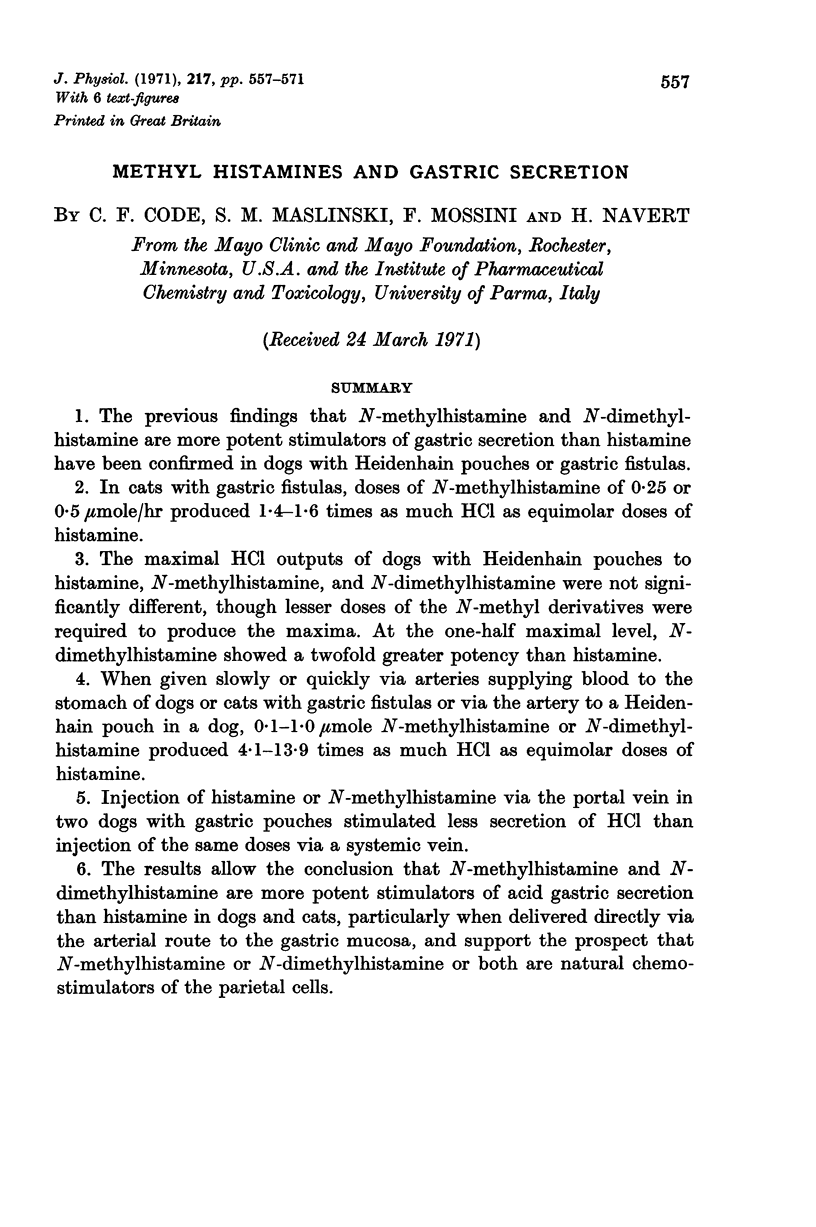
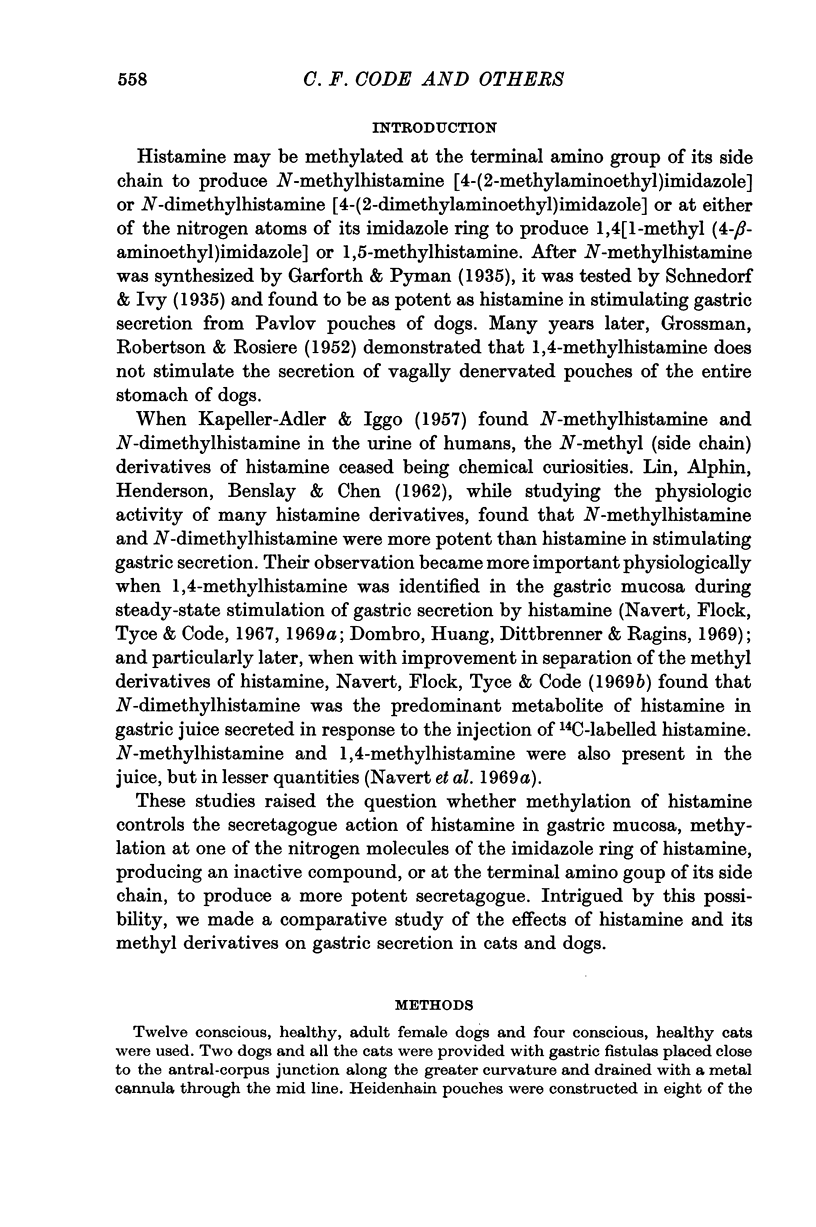
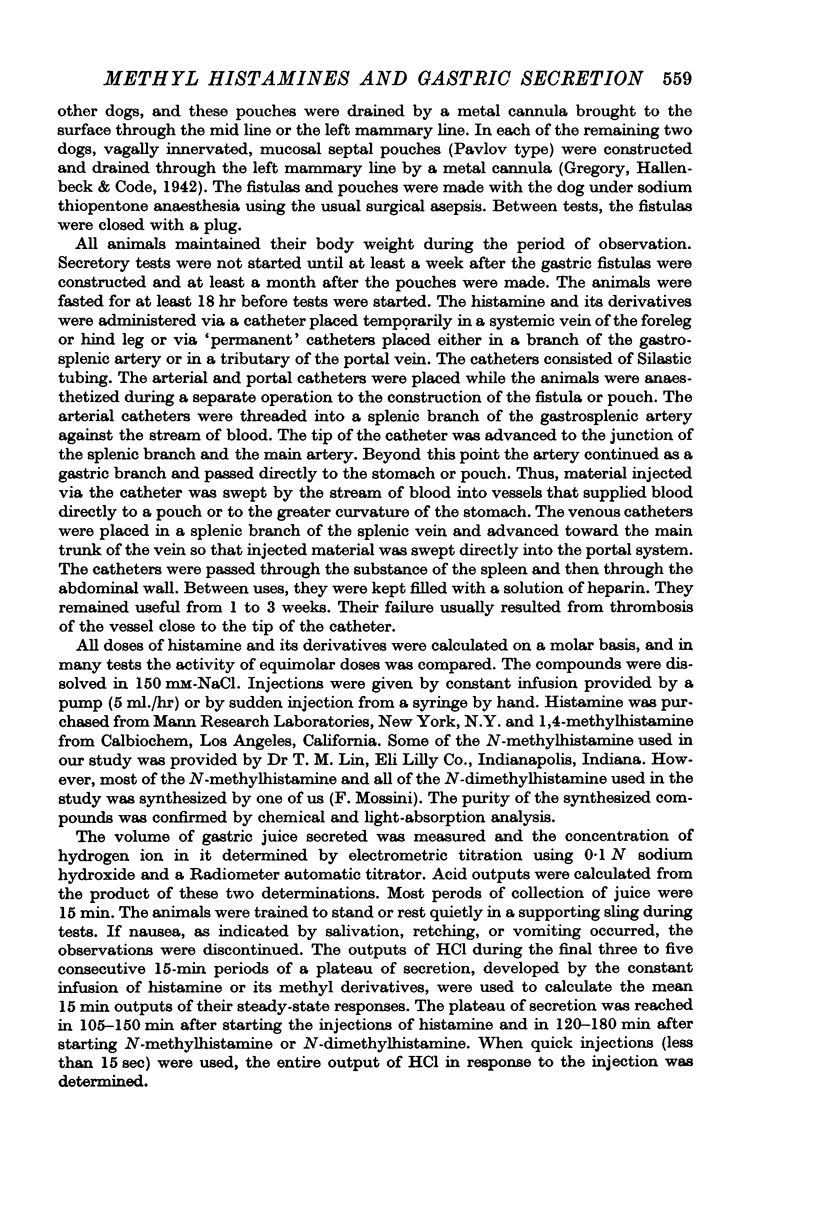
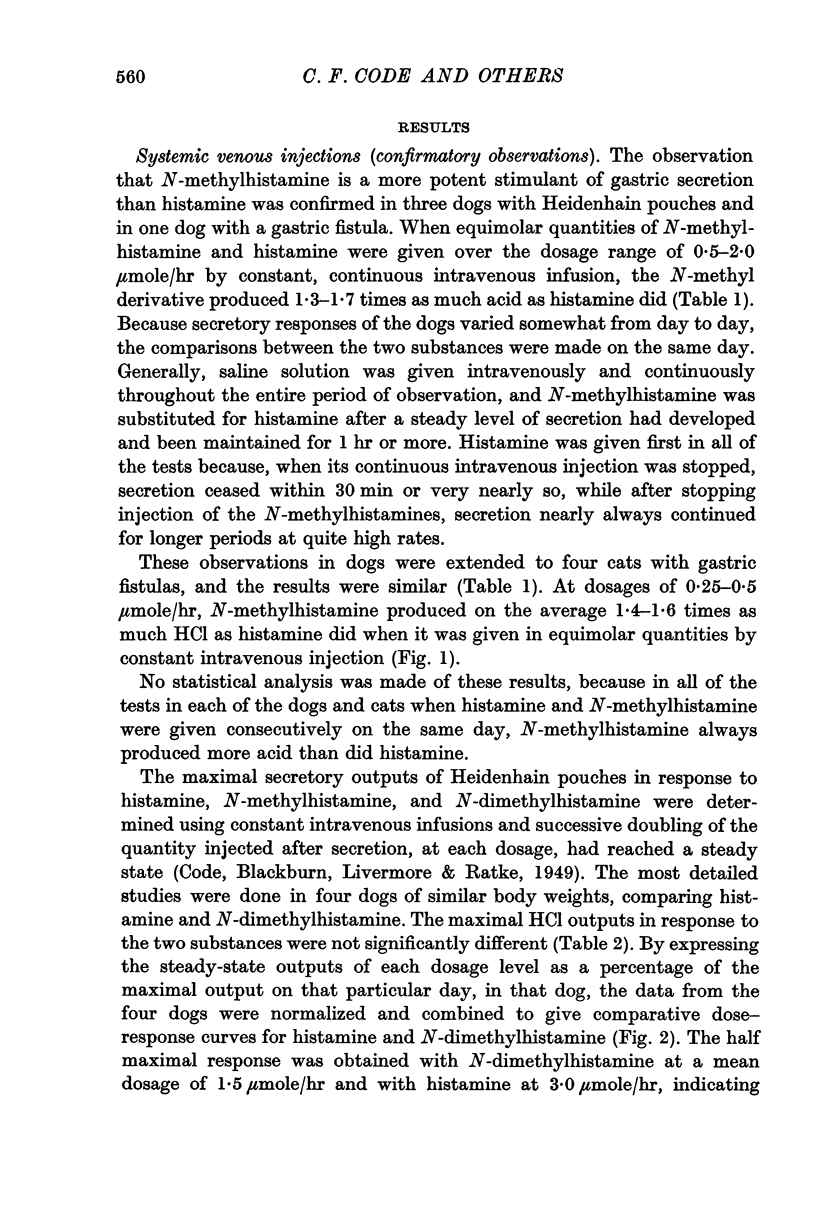
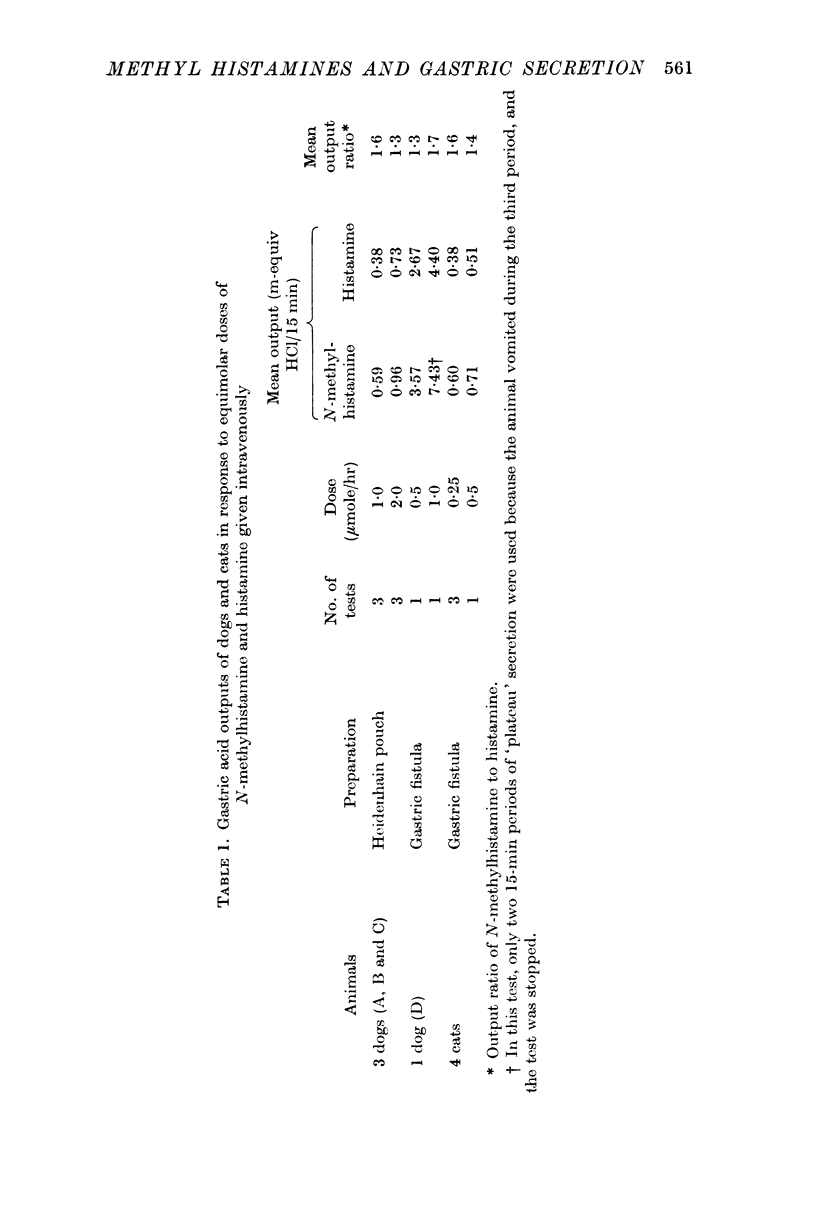
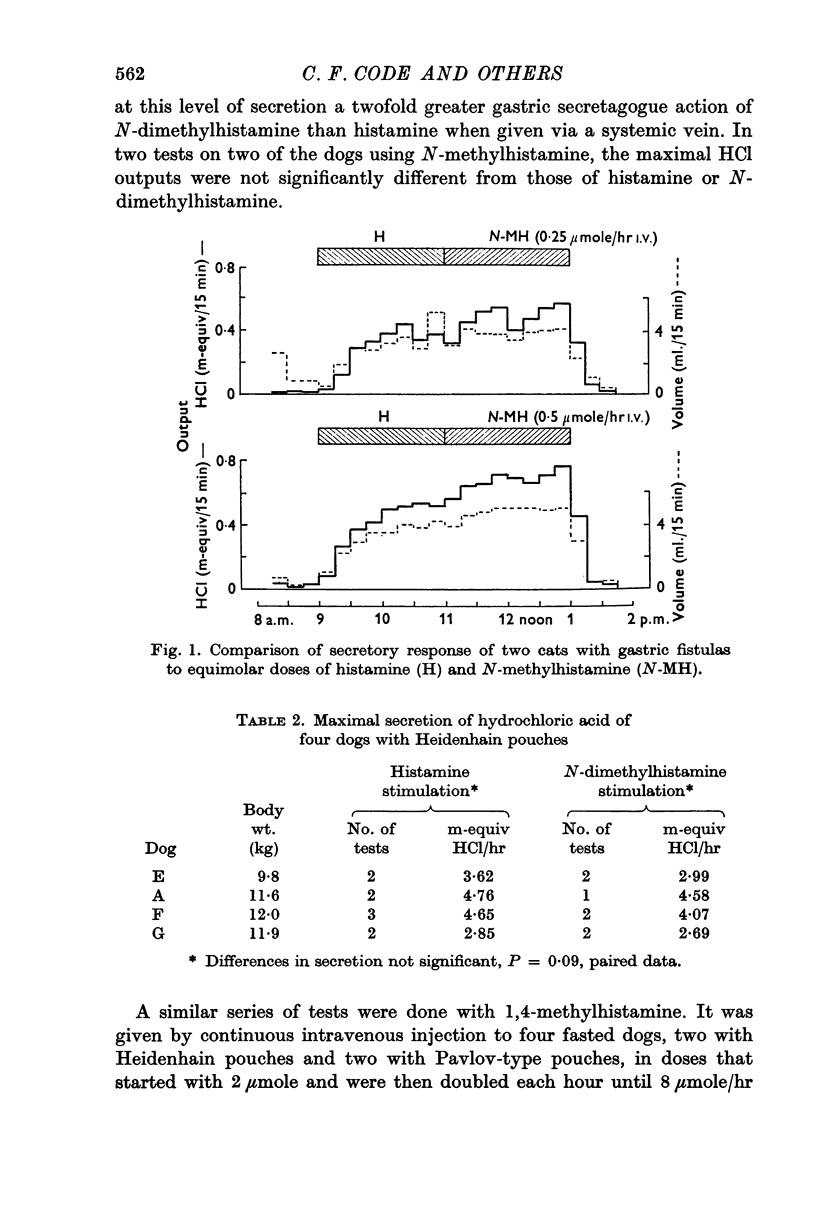
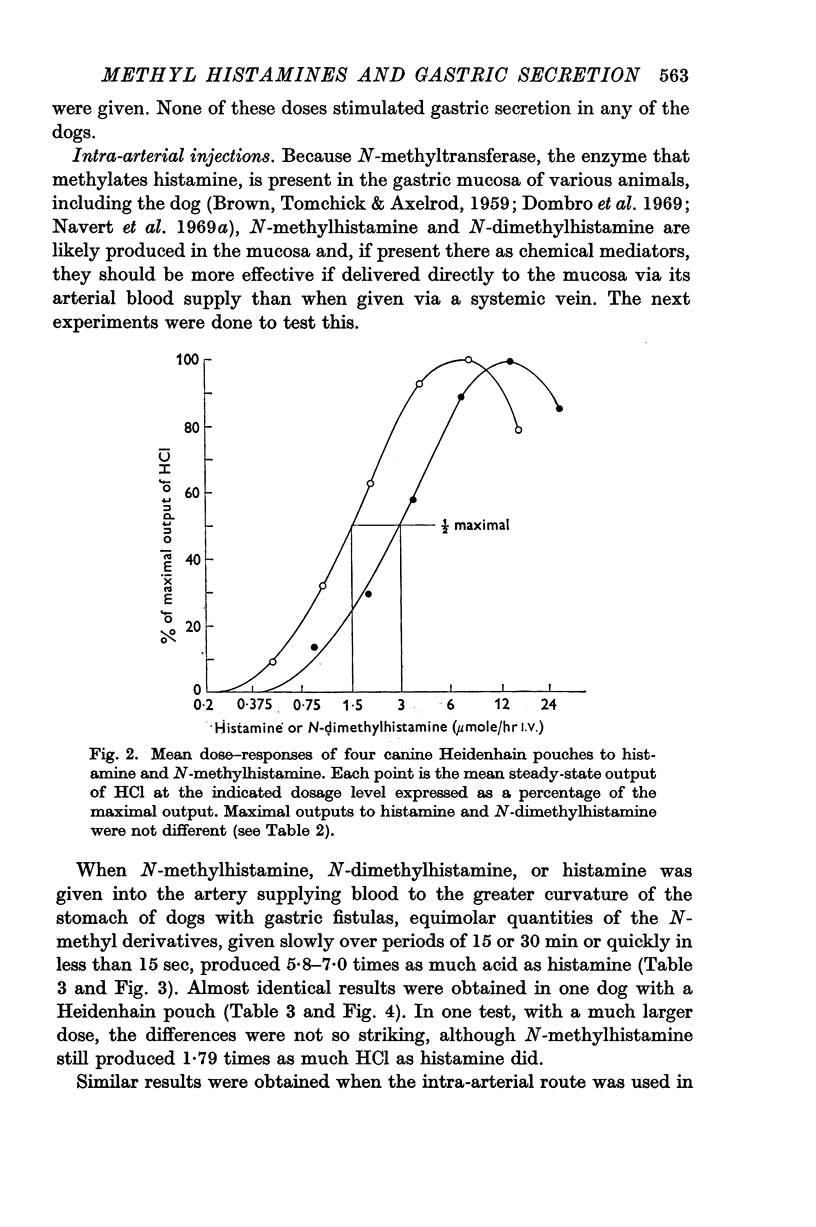
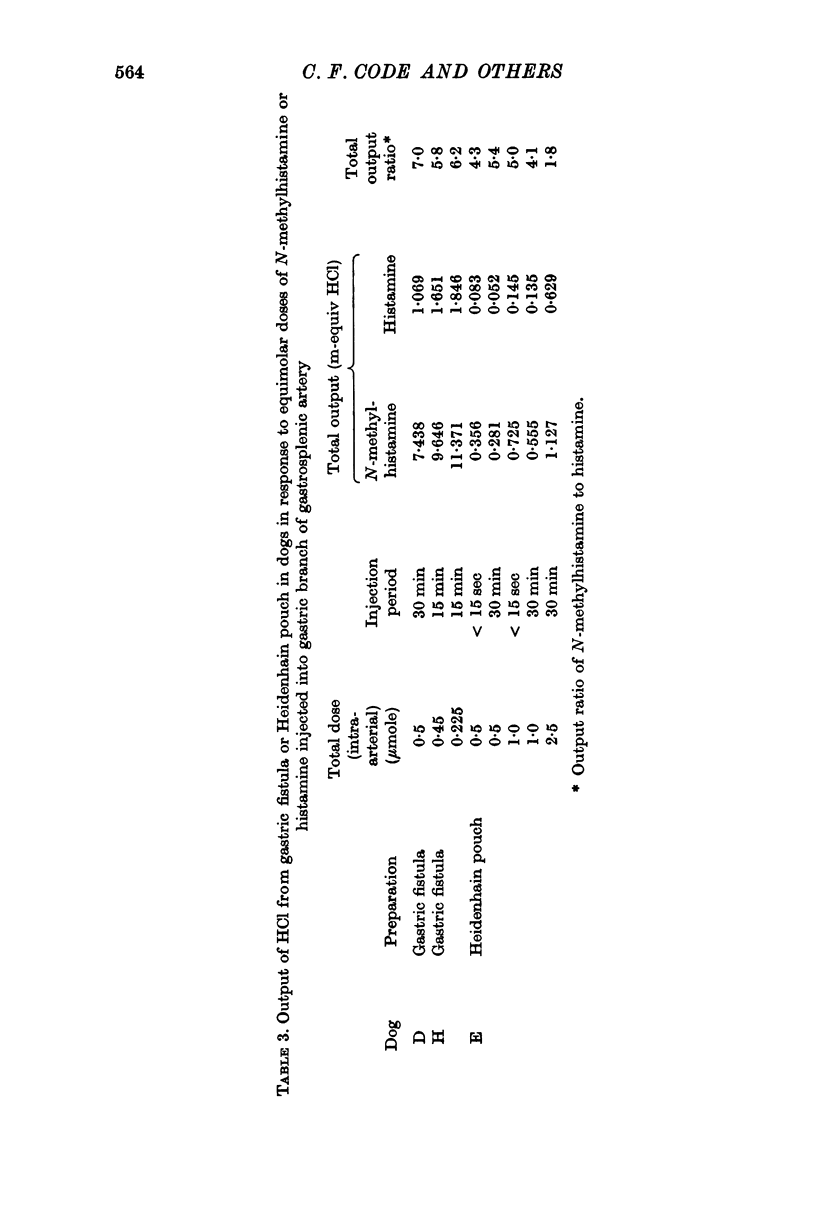
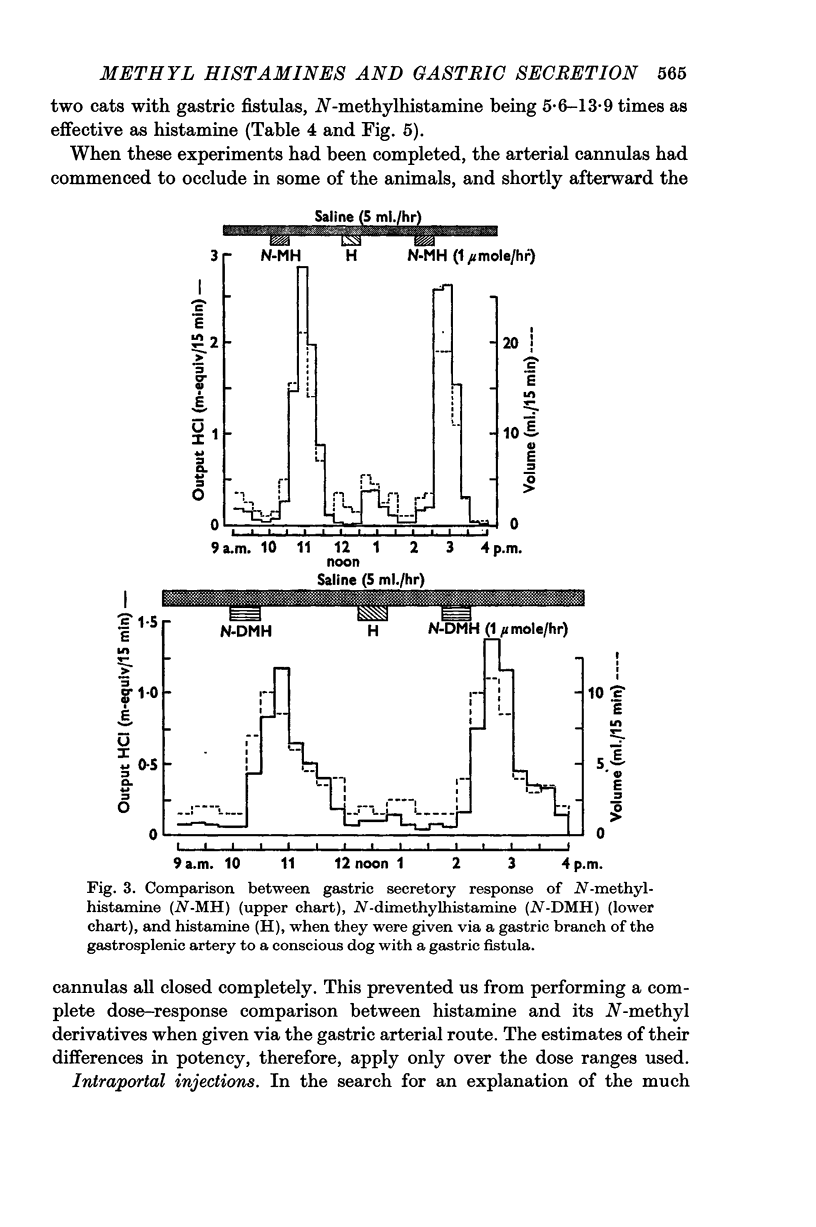
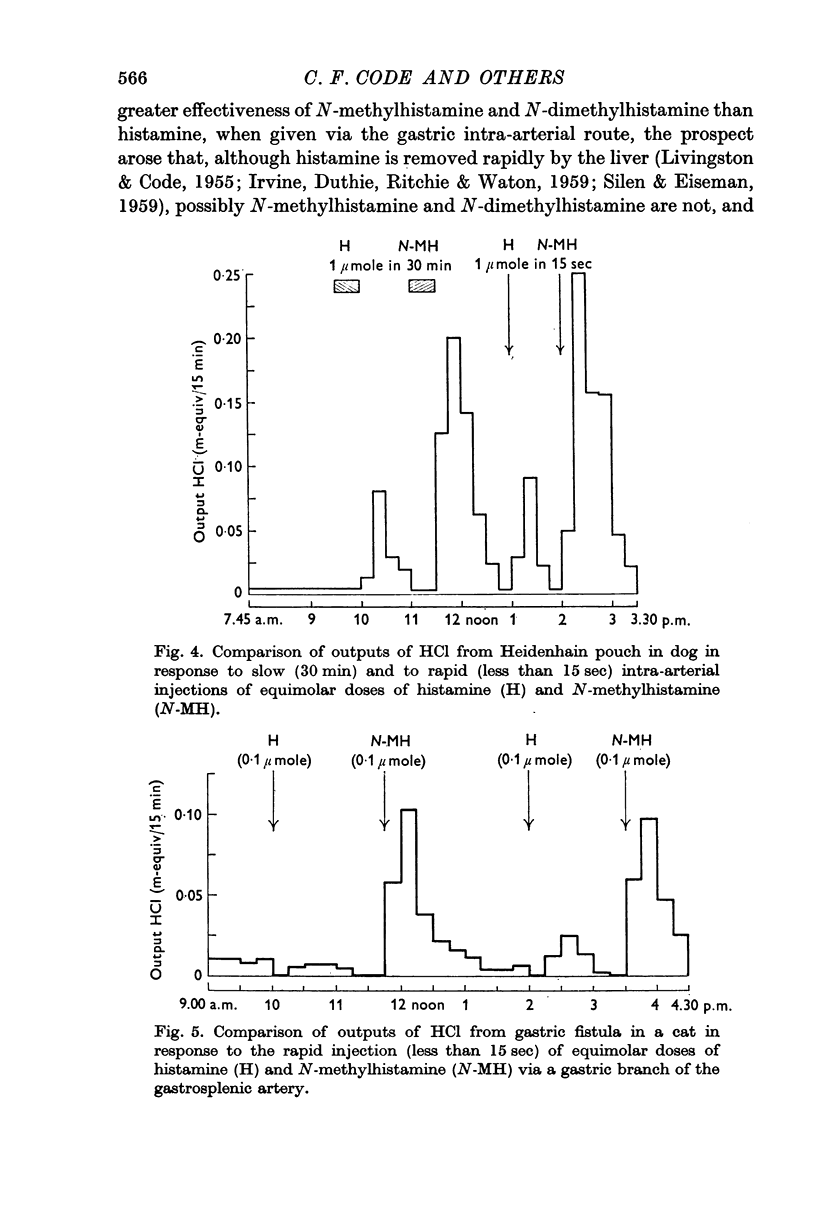

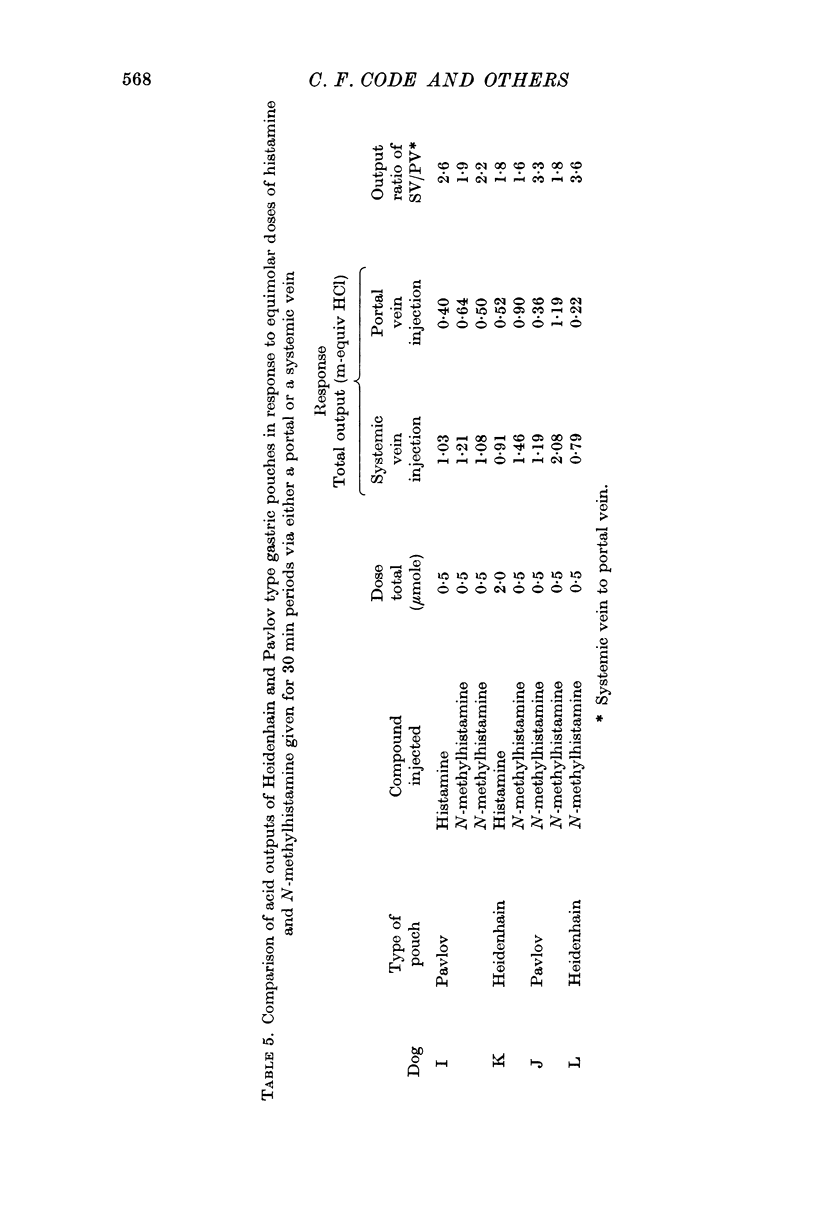
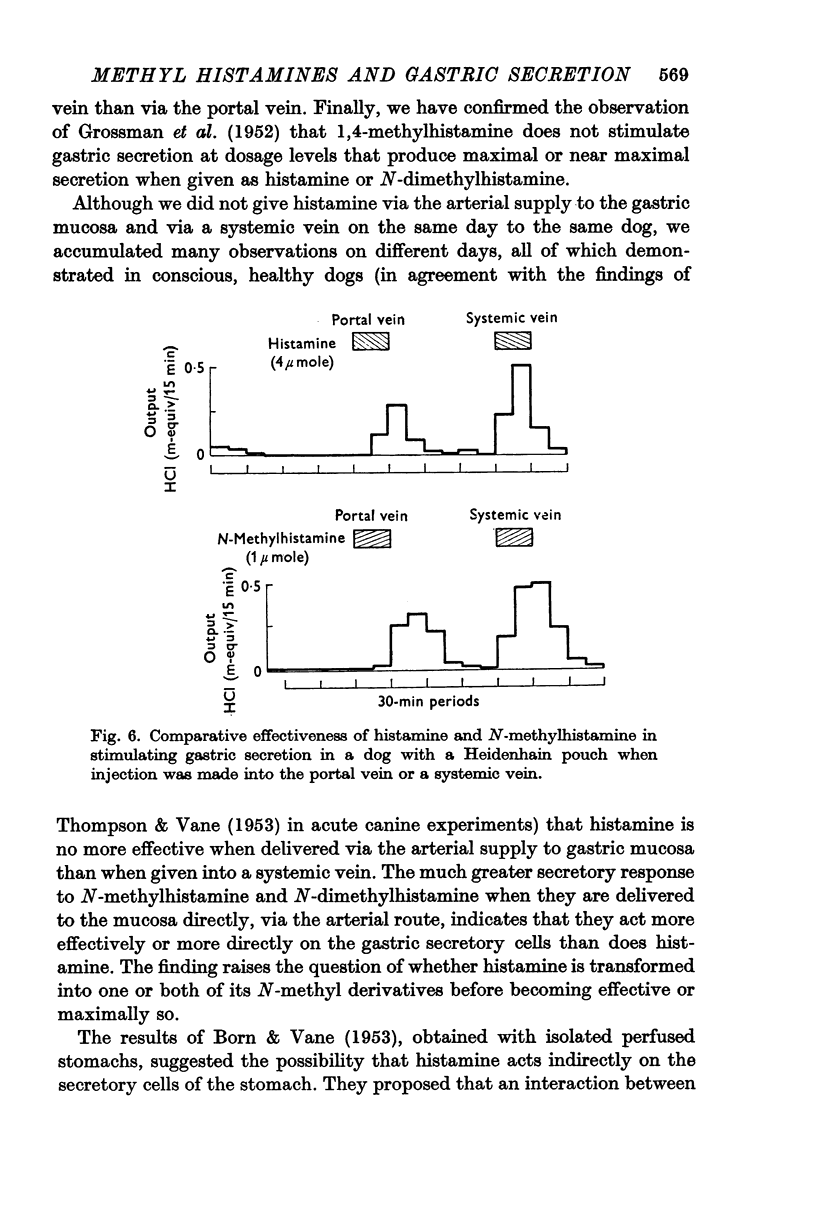
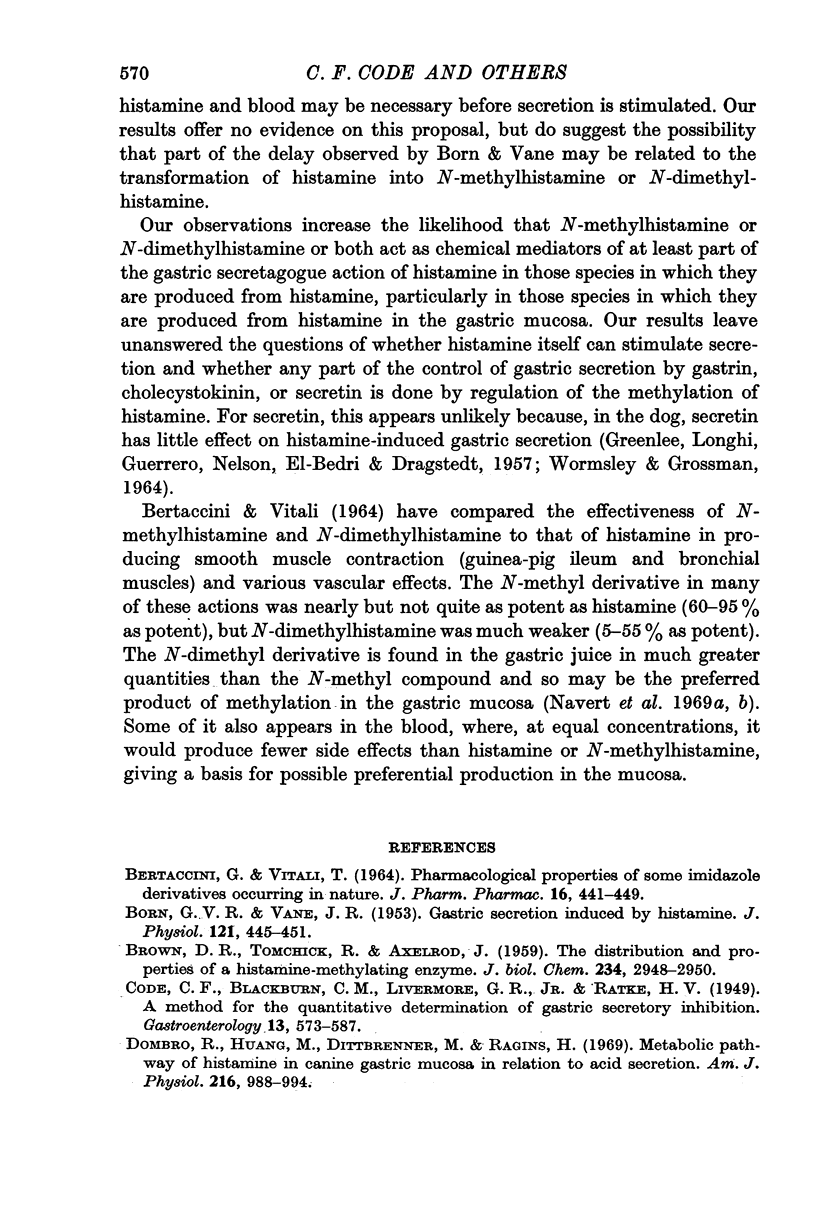
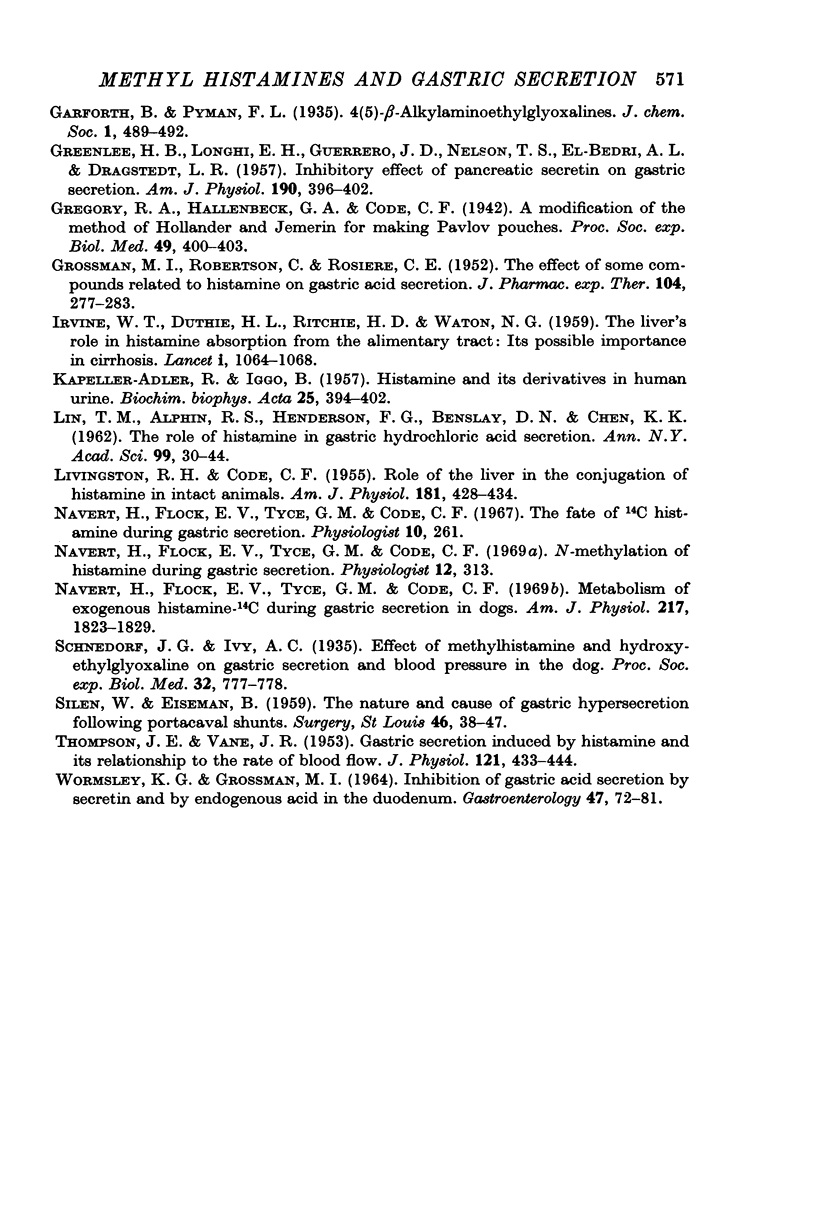
Selected References
These references are in PubMed. This may not be the complete list of references from this article.
- BERTACCINI G., VITALI T. PHARMACOLOGICAL PROPERTIES OF SOME IMIDAZOLE DERIVATIVES OCCURRING IN NATURE. J Pharm Pharmacol. 1964 Jul;16:441–449. doi: 10.1111/j.2042-7158.1964.tb07491.x. [DOI] [PubMed] [Google Scholar]
- BORN G. V., VANE J. R. Gastric secretion induced by histamine. J Physiol. 1953 Sep;121(3):445–451. doi: 10.1113/jphysiol.1953.sp004957. [DOI] [PMC free article] [PubMed] [Google Scholar]
- BROWN D. D., TOMCHICK R., AXELROD J. The distribution and properties of a histamine-methylating enzyme. J Biol Chem. 1959 Nov;234:2948–2950. [PubMed] [Google Scholar]
- CODE C. F., BLACKBURN C. M. A method for the quantitative determination of gastric secretory inhibition. Gastroenterology. 1949 Dec;13(6):573–588. [PubMed] [Google Scholar]
- Dombro R., Huang M., Dittbrenner M., Ragins H. Metabolic pathway of histamine in canine gastric mucosa in relation to acid secretion. Am J Physiol. 1969 Apr;216(4):988–994. doi: 10.1152/ajplegacy.1969.216.4.988. [DOI] [PubMed] [Google Scholar]
- GREENLEE H. B., LONGHI E. H., GUERRERO J. D., NELSEN T. S., EL-BEDRI A. L., DRAGSTEDT L. R. Inhibitory effect of pancreatic secretin on gastric secretion. Am J Physiol. 1957 Sep;190(3):396–402. doi: 10.1152/ajplegacy.1957.190.3.396. [DOI] [PubMed] [Google Scholar]
- GROSSMAN M. I., ROBERTSON C., ROSIERE C. E. The effect of some compounds related to histamine on gastric acid secretion. J Pharmacol Exp Ther. 1952 Mar;104(3):277–283. [PubMed] [Google Scholar]
- IRVINE W. T., DUTHIE H. L., RITCHIE H. D., WATON N. G. The liver's role in histamine absorption from the alimentary tract; its possible importance in cirrhosis. Lancet. 1959 May 23;1(7082):1064–1069. doi: 10.1016/s0140-6736(59)90650-6. [DOI] [PubMed] [Google Scholar]
- LIN T. M., ALPHIN R. S., HENDERSON F. G., BENSLAY D. N., CHEN K. K. The role of histamine in gastric hydrochloric acid secretion. Ann N Y Acad Sci. 1962 Feb 28;99:30–44. doi: 10.1111/j.1749-6632.1962.tb45284.x. [DOI] [PubMed] [Google Scholar]
- LIVINGSTON R. H., CODE C. F. Role of the liver in the conjugation of histamine in intact animals. Am J Physiol. 1955 May;181(2):428–434. doi: 10.1152/ajplegacy.1955.181.2.428. [DOI] [PubMed] [Google Scholar]
- Navert H., Flock E. V., Tyce G. M., Code C. F. Metabolism of exogenous histamine-14C during gastric secretion in dogs. Am J Physiol. 1969 Dec;217(6):1823–1829. doi: 10.1152/ajplegacy.1969.217.6.1823. [DOI] [PubMed] [Google Scholar]
- SILEN W., EISEMAN B. The nature and cause of gastric hypersecretion following portacaval shunts. Surgery. 1959 Jul;46(1):38–47. [PubMed] [Google Scholar]
- THOMPSON J. E., VANE J. R. Gastric secretion induced by histamine and its relationship to the rate of blood flow. J Physiol. 1953 Sep;121(3):433–444. doi: 10.1113/jphysiol.1953.sp004956. [DOI] [PMC free article] [PubMed] [Google Scholar]
- WORMSLEY K. G., GROSSMAN M. I. INHIBITION OF GASTRIC ACID SECRETION BY SECRETIN AND BY ENDOGENOUS ACID IN THE DUODENUM. Gastroenterology. 1964 Jul;47:72–81. [PubMed] [Google Scholar]


